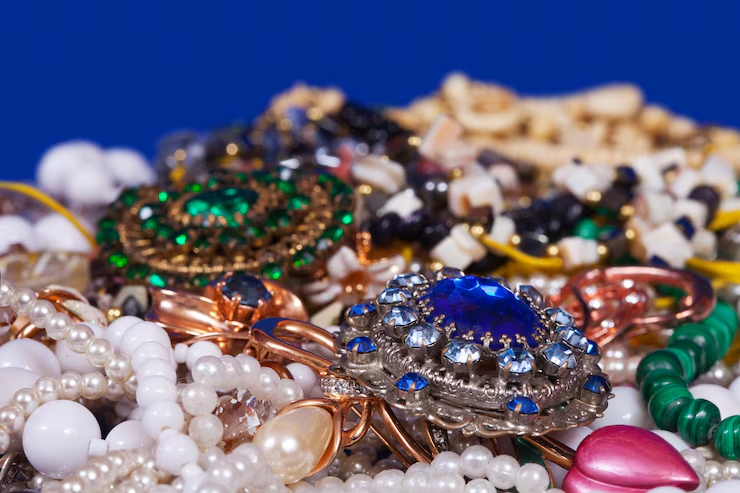Fashion
Discover the Beauty and Meaning of Southwestern Jewelry

Ever wondered why Southwestern jewelry stands out so distinctly in both design and meaning? With roots in Native American artistry and regional craftsmanship, it reflects a powerful blend of culture, tradition, and natural materials like turquoise and silver.
Arizona—especially cities like Scottsdale—has become a central hub for discovering authentic pieces that carry both beauty and heritage. For beginners, understanding the styles, materials, and cultural background is the first step toward appreciating and collecting jewelry that tells a deeper story.
The Cultural Roots of Southwestern Jewelry
Southwestern jewelry has deep roots in Native American traditions, particularly among the Navajo, Zuni, and Hopi tribes. These communities have crafted jewelry for centuries, using techniques passed down through generations.
Designs often incorporate spiritual and cultural symbols, such as sunfaces, feathers, and animals, each carrying its own meaning. Over time, jewelry became not just a personal adornment but a way to share tribal identity and tell stories through wearable art.
Spanish settlers and Mexican silversmiths also influenced the development of Southwestern jewelry. The blending of indigenous beadwork with Spanish metalwork traditions gave rise to the unique styles we recognize today.
As trade expanded in the region, especially in areas like Arizona and New Mexico, jewelry evolved to meet both ceremonial and commercial demands. The result is a dynamic craft that remains rooted in tradition while continuing to evolve in modern contexts.
Key Materials Used in Southwestern Jewelry
Turquoise is the most iconic stone used in Southwestern jewelry. Valued for both its vibrant color and cultural meaning, turquoise is often sourced from mines throughout Arizona. Different shades, from deep green to sky blue, can suggest the mine of origin and add to a piece’s uniqueness. Many Native American communities believe turquoise brings protection and balance, which explains its frequent use in ceremonial and personal pieces.
Sterling silver is another foundational material, commonly used in rings, bracelets, and concho belts. Artisans often hand-stamp or oxidize silver to create depth and intricate patterns.
Coral, jet, spiny oyster shell, and onyx also make appearances, often inlaid with great precision. Traditional pieces sometimes incorporate shells and animal bone, showing how natural materials have long been respected and used in Southwestern artistry.
Southwestern Jewelry Hotspots in Arizona
Arizona is central to the Southwestern jewelry scene, with Scottsdale standing out as a key destination. The city is known for its arts districts and regular events that feature local and Native artisans. Visitors can explore galleries that specialize in handcrafted jewelry, often with artists present to discuss their techniques and heritage.
Arizona’s focus on preserving and promoting Southwestern artistry makes it a great starting point for beginners, and also a popular location for those looking to sell authentic pieces to knowledgeable Scottsdale jewelry buyers who understand the cultural and material value of each item.
Sedona also offers a rich jewelry scene, blending its spiritual vibe with artistic expression. Shops often carry pieces inspired by the local red rock landscapes and indigenous traditions.
Meanwhile, cities like Tucson and Phoenix host some of the largest gem and mineral shows in the country, where you can find raw materials, finished pieces, and live demonstrations. Trading posts and Native markets across the state also serve as hubs for discovering authentic jewelry directly from artisans.
Common Styles and Techniques
One of the most recognizable techniques in Southwestern jewelry is stampwork, especially among Navajo silversmiths. Artists use steel tools to create repeating patterns by hand, often framing stones with sunburst or feather-like impressions. Hopi artists are known for overlay techniques, where two silver sheets are fused—one with cut-out designs and the other oxidized to create contrast.
Stone inlay is another popular technique, particularly among Zuni artisans. It involves setting small, polished stones like turquoise, coral, and jet into intricate mosaic designs. Heishi necklaces, made from tiny shell or stone beads, are traditional Pueblo creations still worn today. Cluster work and squash blossom necklaces offer bold, symmetrical designs and are often considered statement pieces that showcase both technical skill and cultural heritage.
Styling Southwestern Jewelry
Southwestern jewelry is versatile, whether you’re dressing up or going casual. A single turquoise ring or cuff bracelet can add personality to a simple outfit, while layered necklaces or bold concho belts make stronger fashion statements.
The organic colors and textures of natural stones pair well with denim, leather, and neutral fabrics. It’s easy to start with one piece and gradually build a style that reflects your taste.
For those new to this aesthetic, mixing traditional designs with modern wardrobes creates a balanced look. Men often opt for simple silver rings or bolo ties, while women may explore dangle earrings or stacked bangles. Styling isn’t about matching sets—it’s about telling a story with pieces that resonate personally. Because many Southwestern pieces are handmade and unique, they’re great conversation starters as well as artistic expressions.
Caring for Your Southwestern Jewelry
Proper care extends the life of your Southwestern jewelry and keeps it looking its best. Turquoise, for example, is a porous stone that can absorb oils and chemicals, leading to discoloration.
Avoid lotions, perfumes, and water exposure when wearing turquoise. To clean, gently wipe with a soft cloth—never use commercial jewelry cleaners unless they’re safe for both silver and soft stones.
Sterling silver naturally oxidizes over time, which can enhance the look if you prefer a more aged patina. If you want to restore shine, use a silver polishing cloth rather than harsh chemicals.
Store pieces separately to prevent scratches and tarnishing—especially important for items with inlay or delicate beadwork. With a little attention, your jewelry can remain vibrant and wearable for decades.
Conclusion
What makes Southwestern jewelry more than just an accessory? It’s the blend of history, craftsmanship, and cultural expression that gives each piece lasting value. Whether you’re exploring the artisan markets of Scottsdale or learning to spot authentic materials like turquoise and sterling silver, starting with the right knowledge helps you buy with confidence and appreciation.
As you build your collection, you’re not just wearing art—you’re carrying forward a living tradition rooted in the American Southwest.
-

 Celebrity1 year ago
Celebrity1 year agoWho Is Jennifer Rauchet?: All You Need To Know About Pete Hegseth’s Wife
-

 Celebrity1 year ago
Celebrity1 year agoWho Is Mindy Jennings?: All You Need To Know About Ken Jennings Wife
-

 Celebrity1 year ago
Celebrity1 year agoWho Is Enrica Cenzatti?: The Untold Story of Andrea Bocelli’s Ex-Wife
-

 Celebrity1 year ago
Celebrity1 year agoWho Is Klarissa Munz: The Untold Story of Freddie Highmore’s Wife
















